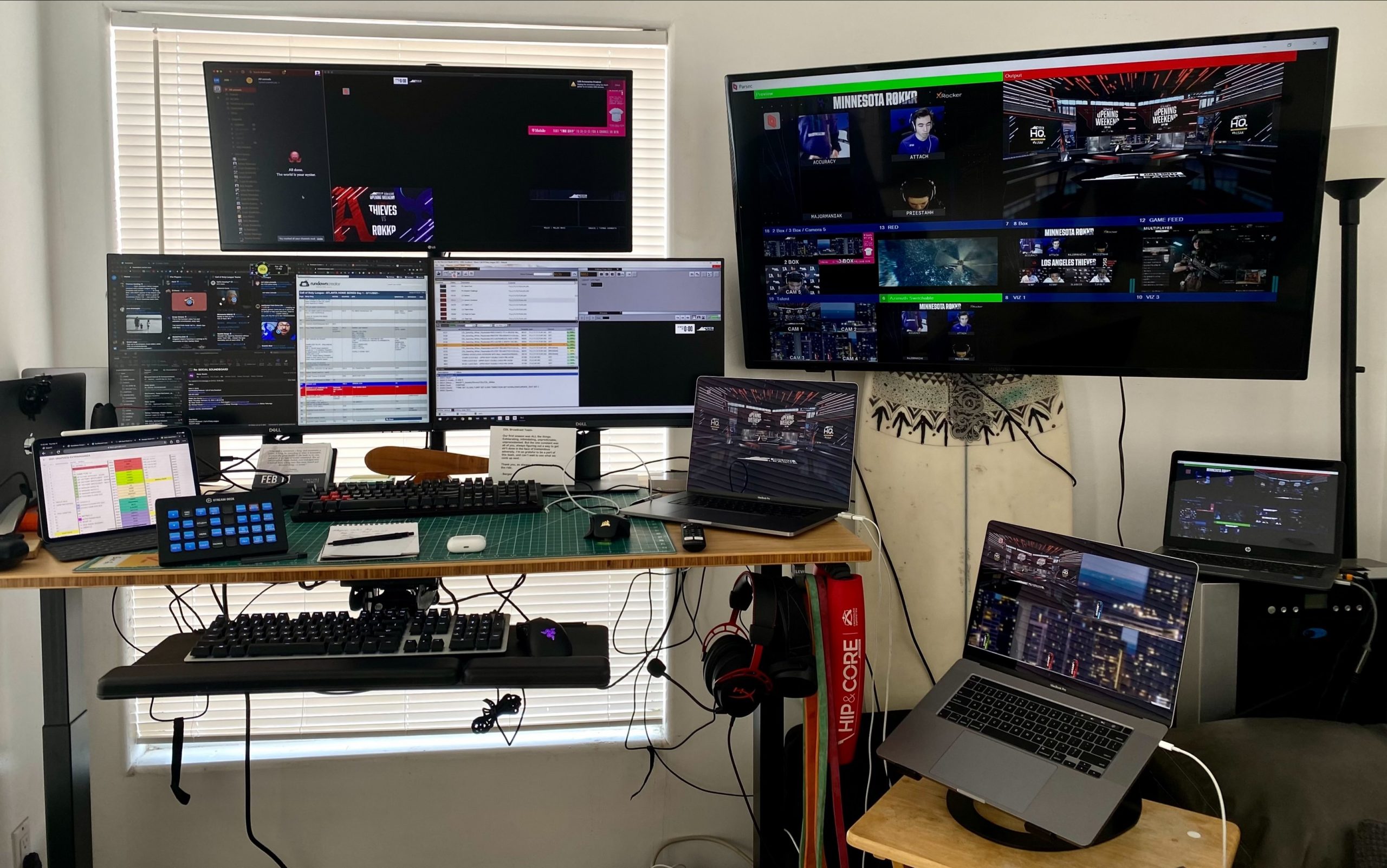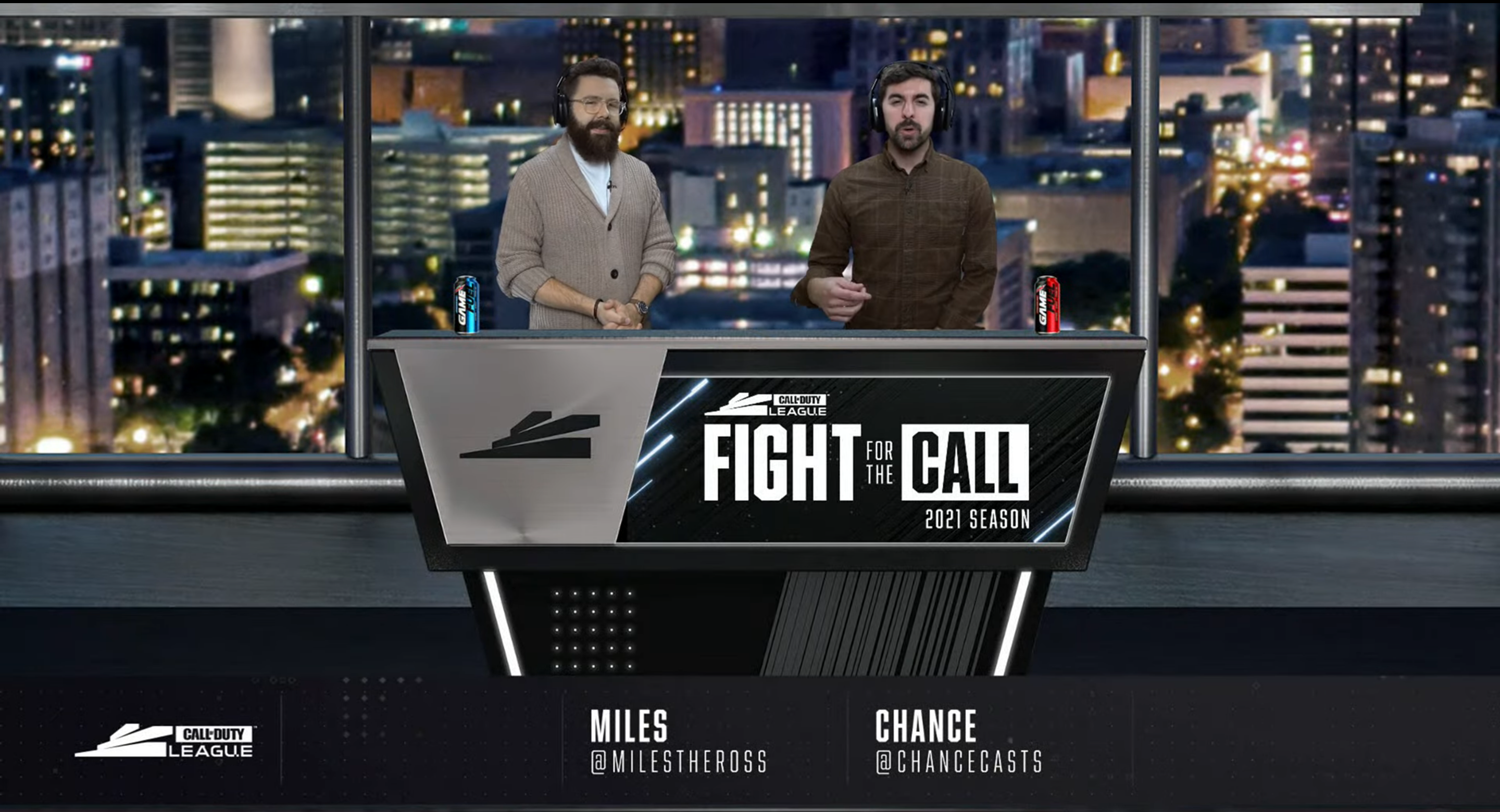In Call of Duty League Season 2, Activision Blizzard Esports Boosts Cloud-Based Production
Observers, graphics, and other ops are moved into the cloud to improve workflow
Story Highlights
When the pandemic brought in-person esports tournaments to a halt last March, Activision Blizzard Esports was among the first to shift to a cloud-based production model to allow competitions to resume online in a matter of weeks. Now, as Call of Duty League (CDL) ramps up its second season and continues to hold tournaments remotely, Blizzard has continued to build out its cloud-based ecosystem even further.
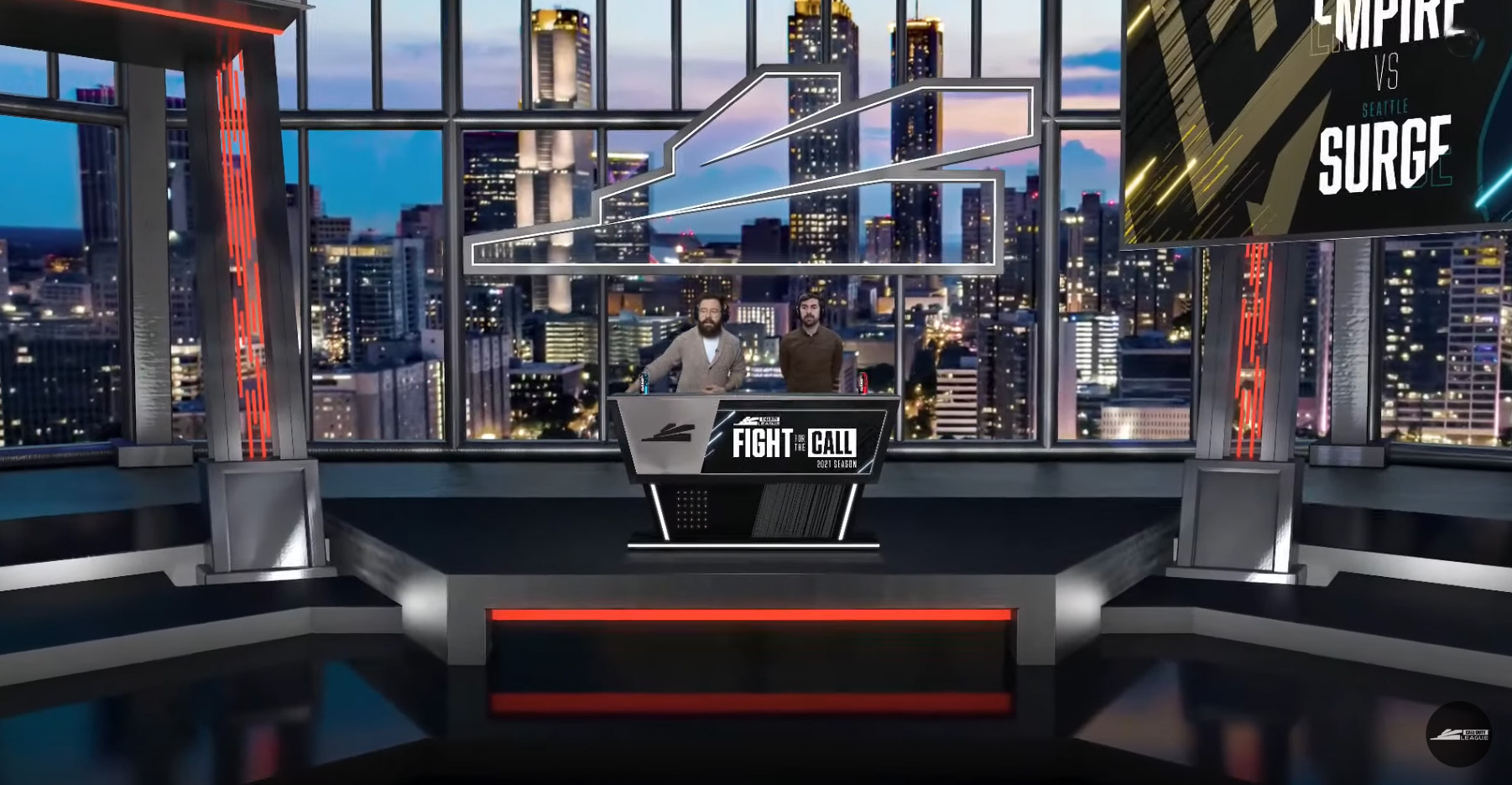
The Call of Duty League virtual set is rendered in Cinema 4D and implemented into the broadcast via vMix.
“Moving more and more pieces to cloud is our main goal right now as we look to improve the broadcast workflow,” says Corey Smith, director, live operations, global broadcast, Activision Blizzard Esports (ABE). “I couldn’t be happier with the team and the way that we were able to pivot from ground operations to cloud operations so quickly from a production standpoint. A lot of our transmission and distribution was already cloud-based, so it was really bolting on the production piece that made it all come together this last year. Now we’re looking to take it to the next level.”
Inside the Production Ecosystem: Shifting Observers, Graphics to the Cloud
ABE’s production workflow, is built around a blend of vMix live-streaming software and Grass Valley’s GV AMPP (Agile Media Processing Platform) cloud-based SaaS production platform. Crew members are working from their respective homes, communicating primarily via Unity Intercom software. While many of the pieces of the workflow were developed on the fly last year in response to the pandemic, ABE had already been cultivating cloud-based solutions for several years.
Last year, some Call of Duty observers (in-game camera operators/storytellers) and casters were hindered by the limits of the public-internet speeds. As a result, ABE is looking to shift several of its observer clients into the cloud to circumvent slow residential internet speeds.
“There’s a lot of symmetry when it comes to people’s internet connections,” Smith notes. “We’re constructing a better tech strategy this season to isolate away from the home-internet problems. We’re trying to run all of our observers in the cloud, where we can actually run 200+ Mbps in our AWS footprint. That way, we can do the ingests in the cloud and remove all of the blockage that home-internet cost us last year. And our development teams are working to get higher-bitrate contribution from the observers to improve the quality of the show.”
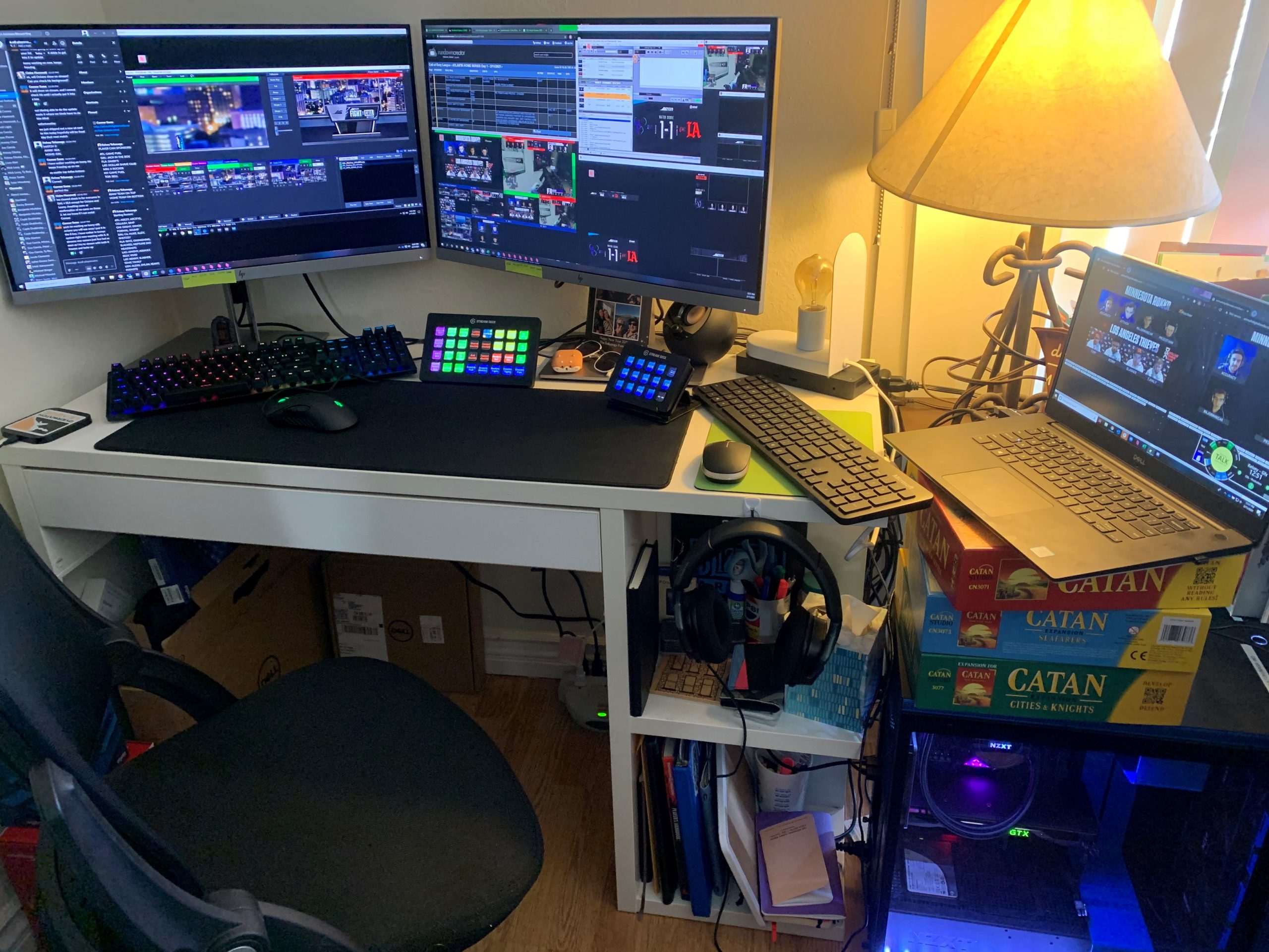
ABE has worked to shift observers, graphics, and other production pieces into the cloud to alleviate potential bandwidth issues at crew members’ homes.
The ABE team has also refactored many of the transport streams for CDL this year to SRT streams in order to reduce contribution latency for observers and casters.
“We don’t expect to have some of the timing issues we had last season, where [on-air talent were] talking over each other or having to wait a few seconds for the others to respond,” says Smith. “We believe we’ve fixed those issues going in the season by moving to SRT for a lot of the contribution.”
ABE has also become one of the first organizations to migrate its Viz Trio real-time graphics operation into the cloud for CDL. Initially last year, the cloud workflow used for CDL relied heavily on Singular graphics. However, ABE was looking for a more robust and accessible solution that could still function in the cloud rather than on-premises. The Viz Trio appliance is now virtualized in an AWS node, removing the need to own physical hardware and opening up a host of new possibilities for Viz Trio in the cloud.
“Putting Viz Trio in the cloud has been a big milestone and accomplishment for us,” says ABE Senior Technical Manager Ryan Cole. “It has allowed us to increase the quality of our cloud production, bringing it even closer to where we were prior to the pandemic. What was once an idea turned into several tests and then a full-fledged implementation. It’s great to see it working the way we intended.”
Season 2 Additions: Amped-Up At-Home Talent Kits, In-Game Virtual Ads
With nearly a full season of online events under its belt, the ABE global broadcast team is looking to enhance its remote operations. First off, all casters and analysts have received new remote-production kits consisting of a Sony α7 III mirrorless camera, LED lighting kit, full green-screen setup, and enhanced audio.
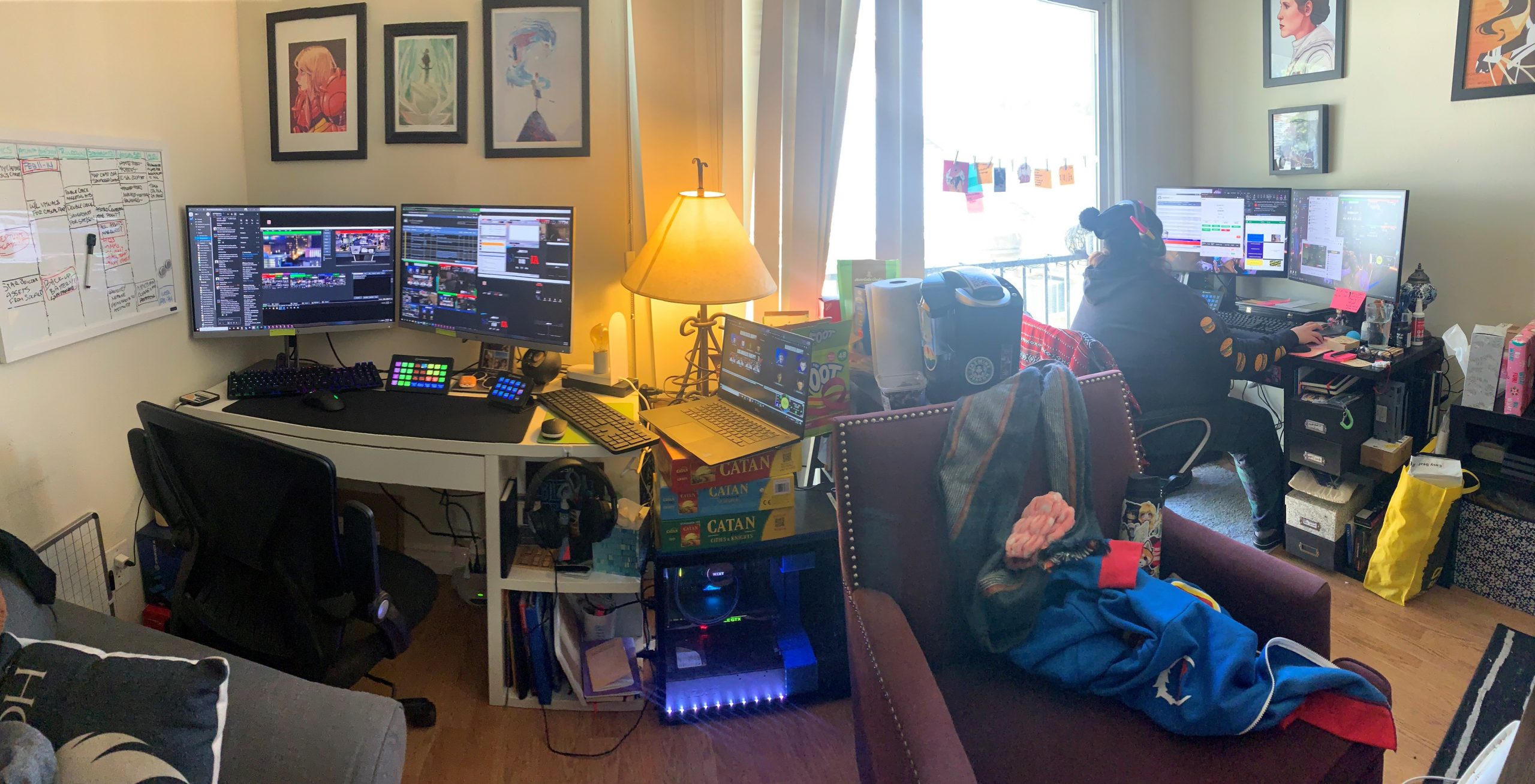
After ramping up a fully at-home production workflow in response to the pandemic last season, the Call of Duty League team is continuing to evolve its workflows this season.
“We’ve upped our game in terms of how we’re capturing on-air talent,” says Smith. “They all have green screens now, so we can change the look and feel of their backgrounds. We can also get into the cameras and actually modify the settings without having a talent bother with it. We’re trying to lean into remote production even more this year by improving the quality.”
Also new this year, ABE is introducing dynamic in-game virtual ad placement within game maps and CDL Duty game action.
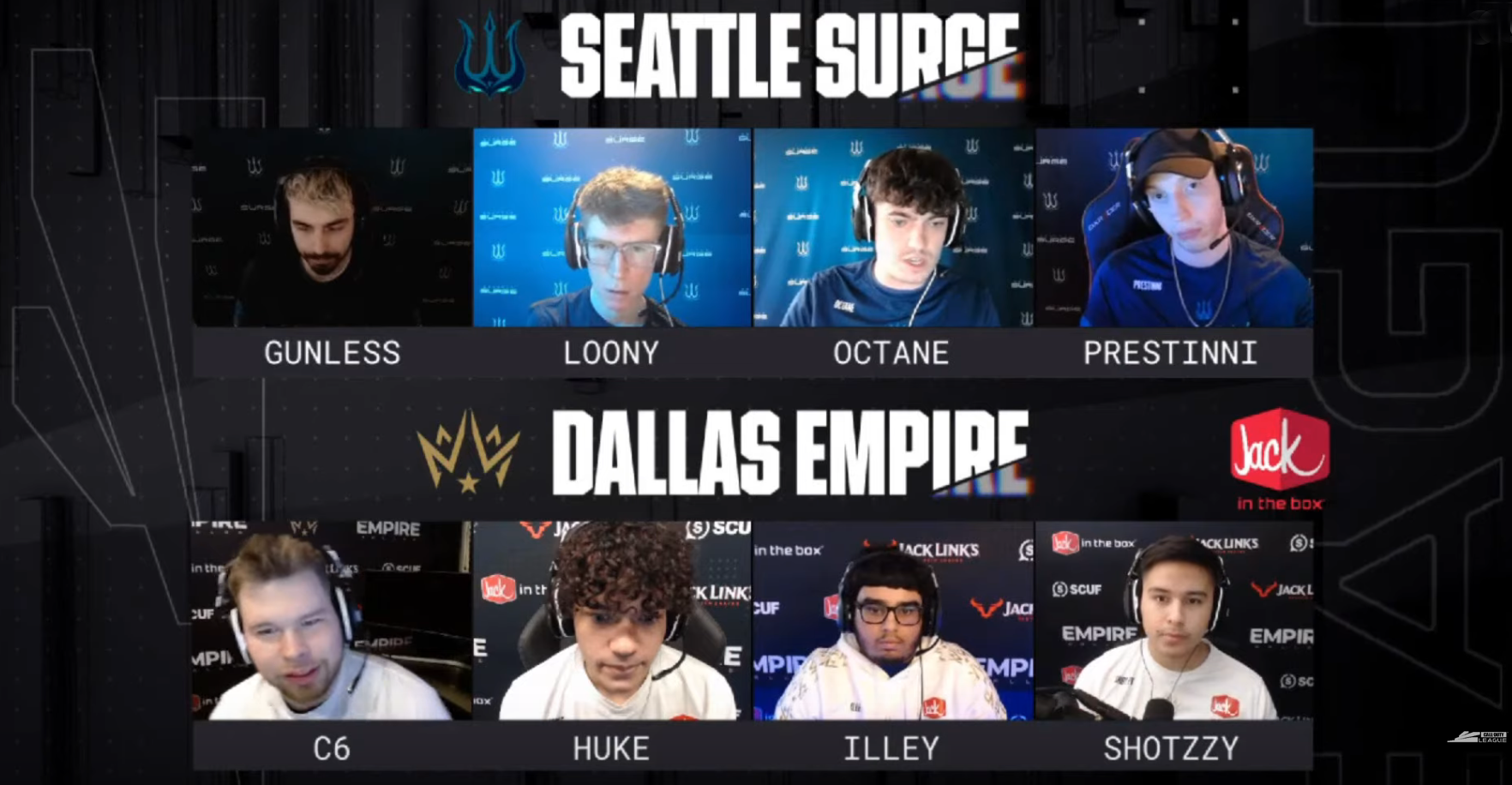
Call of Duty League will continue to run in an online format this year due to the pandemic, but ABE is looking at potential in-person LAN events later in the year.
“We’re taking the concept of green-screen billboards in a sports arena — behind home plate, as an example — and bringing that to esports,” says Smith. “From a technology and a monetization standpoint, that’s really exciting.”
ABE also plans to bring back the impressive virtual-set technology developed for last year’s Overwatch League and Call of Duty Grand Finals at different points during the season. The virtual set is rendered in Cinema 4D and implemented into the broadcast via vMix.
“I think you’ll see the virtual sets come into play during the tentpole events, the big tournament weekends, and Finals,” says Smith. “We got a really great response on that last year, and I’m excited to see how we can continue to evolve the product.”
On the distribution side, AB is shifting all CDL broadcasts to 4K output on YouTube (CDL’s exclusive live-streaming rightsholder) and is looking at 4K HDR later this year.
Looking Ahead: The Cloud Is Here To Stay
Although the ongoing global pandemic makes planning far in advance nearly impossible, Smith says that ABE continues to evaluate the possibility of in-person LAN events later in 2021. However, regardless of whether Call of Duty League events return to live competitions or continue online, the cloud-based workflows that have been ramped up over the past year are here to stay.
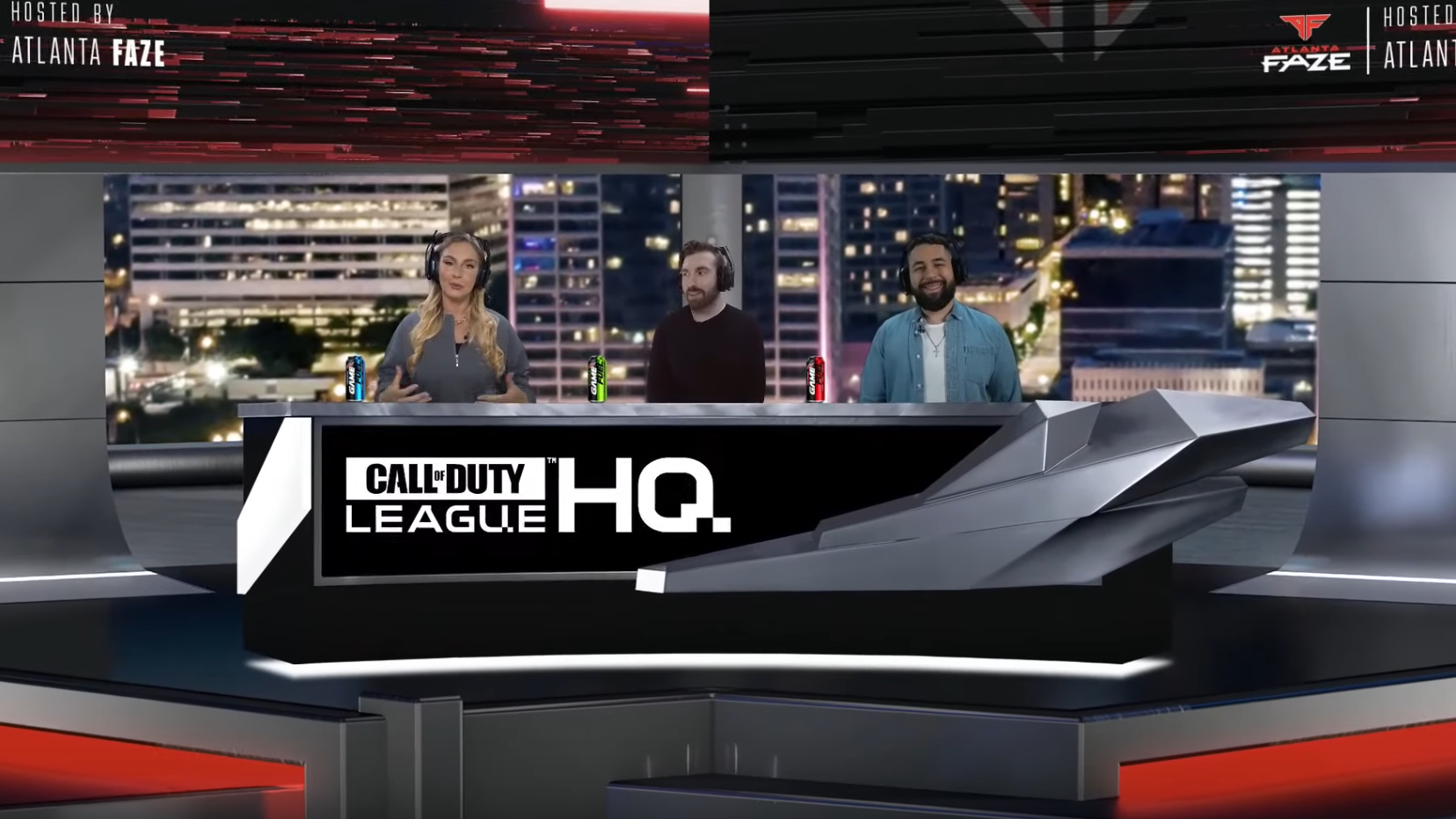
Call of Duty League HQ is a post-competition show hosted within the virtual studio, recapping each day’s games and a preview matches ahead.
“Moving forward, the whole team is going in one direction, and we’re all leaning in on cloud,” says Smith. “Even when we get back to venue-based operations, we fully assume that it’s going to be this hybrid-cloud workflow, where we send only essential talent to the actual venue and your A1 can be in London or your TD in L.A. It opens up a whole different world, like talent availability. It will allow us to make the best show possible based on the tech available. And we’re going to continue to evolve the product and keep innovating.”
On the cusp of CDL Opening Weekend and with Overwatch League set to kick off in April, Smith and his team are ready for another year of innovation in the face of unprecedented challenges.
“I think a lot of what we do is unique — mainly because we have a lot of innovative people that we’ve hired over the years,” he says. “We have a lot of strong talent that has grown up in a non-traditional–broadcast world. While some of them have backgrounds in traditional television, that’s not where their mind is always rooted. We’ve been pretty lucky in terms of the folks that we’ve hired and the technology available at our fingertips to gravitate toward this new world, where we don’t have to have an expensive broadcast hub to operate out of anymore.”
The Call of Duty League Opening Weekend is streaming all weekend at YouTube.com/CODLeague.
